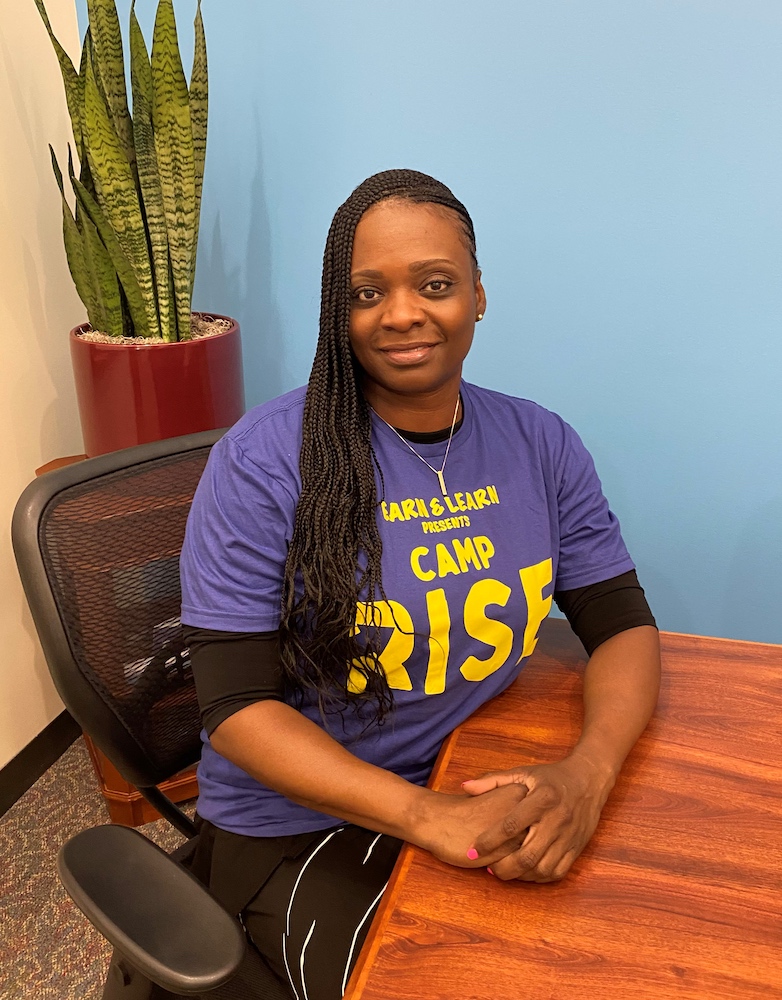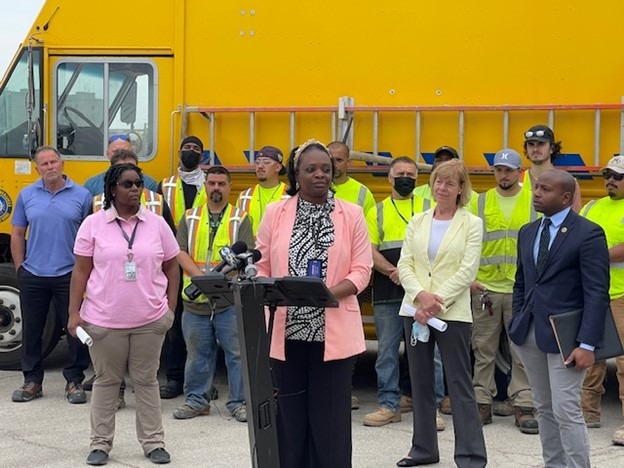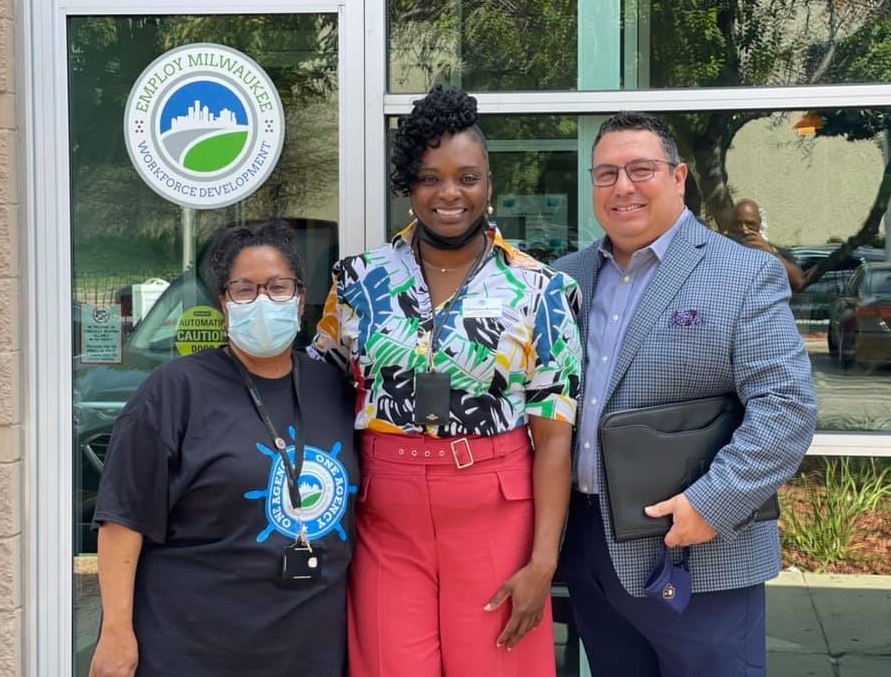That’s the power of secure employment, per Chytania Brown.
“It reminds us of the things we take for granted,” Brown told Technical.ly, sharing the story of a formerly justice-involved mother who landed a full-time job this summer. “There are so many parents who want to do it but aren’t in a position to. It’s a luxury.”
Stories like these are what inspire Brown in her work as the president and CEO of Employ Milwaukee. The nonprofit is one of 11 workforce boards located in and governed by the state that connect individuals to training resources and job opportunities in an effort to expand the regional economy.
Brown said Employ Milwaukee serves a dual mission: to be at the table to help collaborate, monitor and coordinate workforce development efforts, and to build and bridge that talent pipeline. The organization serves anyone from low-skill to high-skill workers to individuals who are chronically unemployed, and reentry populations following stints of incarceration. They also work with youth, exposing children to career opportunities as young as age 10.
An employer-candidate disconnect
The exec came aboard Employ Milwaukee at the height of the pandemic. Despite critical labor challenges, she was determined to continue placing people in jobs and amplifying the organization’s impact. Brown leaned on her relationships at the local, state and national levels, and tapped into the community to understand its workforce needs — both from an employer and a candidate perspective.

What she found was a major disconnect. On one hand, employers were griping about the labor shortage — a national challenge, including in tech — and the lack of qualified talent. On the other, candidates consistently felt their applications were being passed by.
“I remember coming into this space when workforce development and economic development operated independently,” Brown said. “How can you grow the economy without understanding the business of people? That didn’t make sense to me. We have to understand what is coming into our landscape so we can understand what we need to build, to shift those dollars and put them in the direction of what employers’ needs are.”
Meanwhile, Wisconsin faces a labor shortage of nearly 140,000 workers, according to the Department of Workforce Development. While inflation has dinged wage growth, nearly all 72 counties in the state have raised wages, exceeding the national average.
Upending the hiring status quo
The answer to the labor shortage may well lie in the “hidden workforce.” A report from the Harvard Business School and Accenture estimates there are more than 27 million workers who are eager to fill open job roles, but due to traditional “hiring practices,” are rejected before they can even sit for an interview. The hidden workforce includes people with felony convictions, extended unemployment gaps, veterans, those without a college degree and others with nontraditional work experiences.
“When you have folks working in certain jobs, and you’re denying them, is it necessary, or is it because of an old policy?” Brown said, posing the question to employers. “Rejection is so hard for people, especially for someone trying to change their life. It can be hard for me to convince them to keep trying. It can suck the life out of people.”

Fortunately, the pandemic has upended the hiring status quo, Brown said. Since taking the reins at Employ Milwaukee, she’s been involved in a series of “candid conversations” with employers, tackling common misconceptions about workforce development and what the ideal candidate should look like head on.
“When we say we have resources to help skill a workforce, people automatically think about people who don’t want to work, or who are receiving public assistance, or have no skills — it’s this default that they are getting this bad crop of people,” Brown said. “These are individuals that are interested in being a part of the local economy. They want the same opportunities as everybody else.”
Part of this change requires employers to look beyond an individual’s resume, existing skill set, or past and to consider their future working potential. Veterans, older workers, and formerly-incarcerated individuals all have workforce value but are often forgotten or never given a second chance, she said.
Shifting workplace culture norms
While some employers have been increasing incentives in a bid to woo candidates, bonuses and salary increases aren’t a replacement for positive work culture, Brown said.

She uses the story of a young mother fretting about a half-hour gap between the start of her shift and when she could drop her baby off at childcare. In the past, being late to work or bringing a child to the job site would easily result in a write-up or termination, but Brown encourages employers to show some grace.
“You have employees who want to work and are trying to think of what to do, but also don’t feel comfortable addressing the dilemma with leadership,” Brown said. “Many employers think, ‘Why would I be entertaining this problem?’ But it is your problem. We are all facing these challenges. And if you’re concerned about retaining your workforce, we have to think differently about how our culture plays into building the same loyalty you would expect from your employees.”
###
Brown said there is no quick fix to the region’s workforce challenges but believes in promoting a “One Milwaukee” model.
“No one agency, no one group, can solve the ills of our city,” she said. “It’s going to take us all to do that. For me, it was thinking out of the box and innovating as a new leader. I truly believe I was born to be of service to others. I want to help people become their best selves.”
Subscribe to This Week in Milwaukee Rising:







